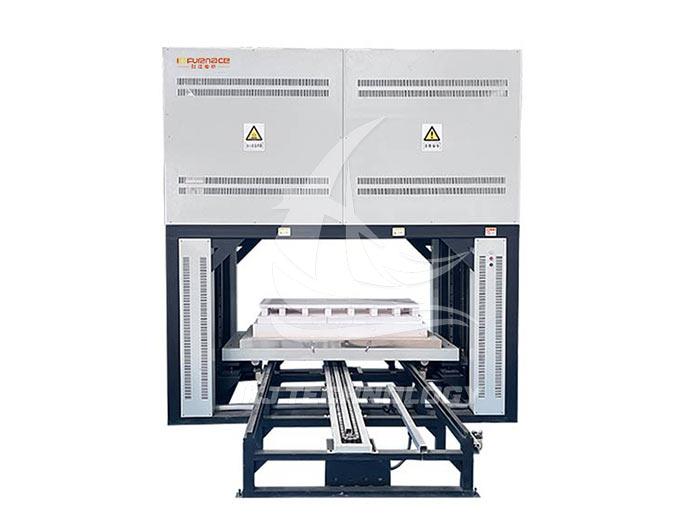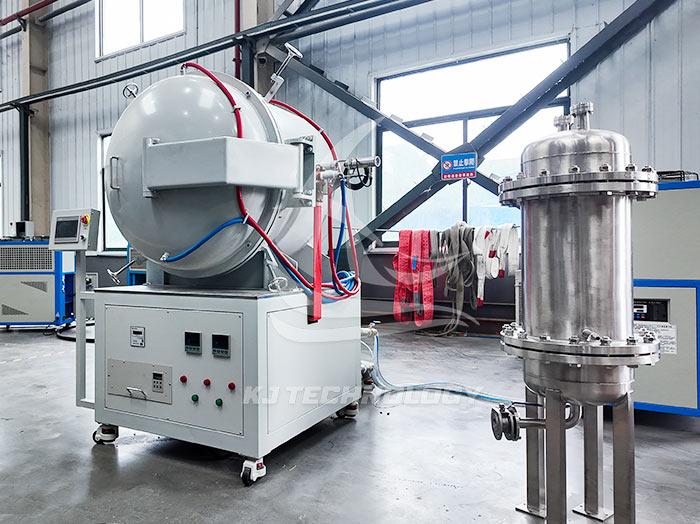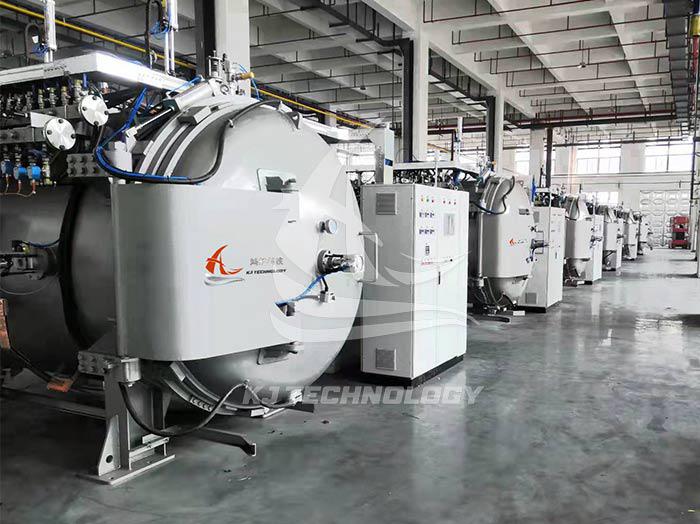What metal materials can be brazed in a high vacuum and high temperature brazing electric furnace?
 08-26-2025 Author: KJ technology
08-26-2025 Author: KJ technology
The high vacuum and high temperature brazing electric furnace, with its ultra-high vacuum environment, precise temperature control, and efficient heating and cooling system, can brazing various metal materials, especially suitable for scenarios that are prone to oxidation, high activity, or require extremely high welding quality. The following are the main metal materials that can be brazed and their typical applications:
1. Light metals and alloys
aluminum alloy
Characteristics: Aluminum alloys are prone to react with oxygen at high temperatures to produce aluminum oxide, leading to embrittlement of welded joints. High vacuum environment can effectively suppress oxidation and improve welding strength.
Application: Manufacturing of complex aluminum structural components such as aircraft engine blades, fuel tanks, automotive radiators, electronic radiators, etc.
Solder: Eutectic aluminum silicon solder (such as Al Si system) has become the preferred choice for aluminum alloy brazing due to its good wetting, flowability, and corrosion resistance.
titanium alloy
Characteristics: Titanium reacts violently with oxygen, nitrogen, and hydrogen at high temperatures, forming brittle compounds. Vacuum brazing can avoid contamination and obtain high-strength, corrosion-resistant joints.
Applications: Aircraft engine compressor discs, orthopedic implants (such as artificial joints), ship propellers, etc.
Solder: Titanium based solder (such as Ti Zr Cu Ni system) can wet refractory metals such as titanium, tungsten, molybdenum, and ceramic materials.
2. High-temperature alloy
Nickel base superalloy
Characteristics: Contains elements such as chromium and aluminum, and is prone to oxidation at high temperatures. Vacuum brazing can maintain material properties and achieve defect free connections.
Applications: Gas turbine blades, nuclear reactor heat exchangers, corrosion-resistant components of chemical equipment, etc.
Solder: Nickel based solder (such as BNi-2, BNi-7), with excellent high temperature resistance and corrosion resistance.
Cobalt based high-temperature alloy
Characteristics: Cobalt has a high melting point and excellent comprehensive mechanical properties. Cobalt based brazing materials are suitable for brazing cobalt based alloys.
Application: High temperature bearings, turbine blades, hot end components, etc.
Solder: Based on Co Cr Ni, adding elements such as silicon and tungsten to reduce melting temperature or improve high-temperature performance.
3. Refractory metal
Tungsten, molybdenum, tantalum, niobium
Characteristics: High melting point (tungsten melting point up to 3410 ℃), and easy to react with oxygen and nitrogen at high temperatures. Vacuum brazing is the only feasible connection method.
Applications: High temperature furnace heating elements, rocket nozzles, nuclear fuel cladding, electronic device packaging, etc.
Solder: Titanium based solder, nickel based solder, or active metal solder (such as Ag Cu Ti).
4. Precious metals
Gold, platinum, palladium
Characteristics: Precious metals are prone to volatilization at high temperatures, and the vacuum environment can control the atmosphere composition and reduce volatilization losses.
Applications: jewelry, precision electronic components (such as capacitor electrodes), chemical catalytic devices, etc.
Solder: Gold based solder (such as Au Ni, Au Cu), palladium based solder (such as Pd Ni, Pd Cu), with excellent oxidation resistance and corrosion resistance.
5. Other metals and alloys
Copper and copper alloys
Characteristics: Copper is prone to volatilization at high temperatures, and a vacuum environment can reduce the volatilization rate while avoiding oxidation.
Applications: power electronic radiators, vacuum electronic devices (such as traveling wave tubes), refrigeration equipment condensers, etc.
Solder: Copper based solder (such as Cu-P, Cu Ag) has excellent electrical and thermal conductivity.
stainless steel
Characteristics: Brazing stainless steel under vacuum can avoid the formation of oxide scale, reduce subsequent processing steps, and improve the corrosion resistance of the joint.
Applications: food processing equipment, medical devices (such as surgical instruments), building decorations, etc.
Solder: Nickel based solder, silver based solder (such as Ag Cu).
silver-base alloy
Features: Silver based brazing material has a low melting point and excellent wetting performance, suitable for brazing most metals except aluminum and magnesium.
Applications: electronic devices, jewelry, precision instruments, etc.
Solder: Silver based solder (such as BAg-45CuZn) can wet non-metallic materials such as ceramics and graphite after adding active elements.








